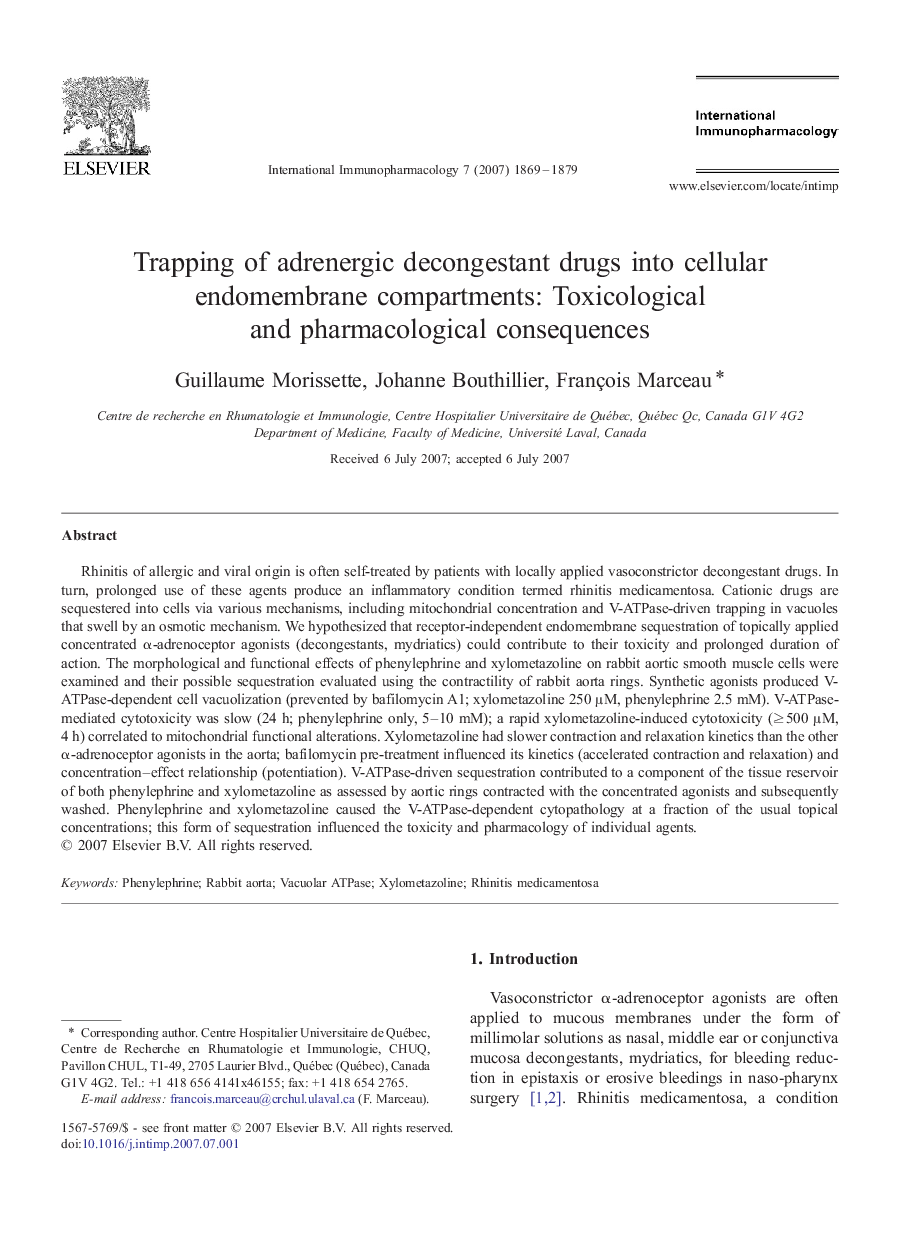| Article ID | Journal | Published Year | Pages | File Type |
|---|---|---|---|---|
| 2542385 | International Immunopharmacology | 2007 | 11 Pages |
Rhinitis of allergic and viral origin is often self-treated by patients with locally applied vasoconstrictor decongestant drugs. In turn, prolonged use of these agents produce an inflammatory condition termed rhinitis medicamentosa. Cationic drugs are sequestered into cells via various mechanisms, including mitochondrial concentration and V-ATPase-driven trapping in vacuoles that swell by an osmotic mechanism. We hypothesized that receptor-independent endomembrane sequestration of topically applied concentrated α-adrenoceptor agonists (decongestants, mydriatics) could contribute to their toxicity and prolonged duration of action. The morphological and functional effects of phenylephrine and xylometazoline on rabbit aortic smooth muscle cells were examined and their possible sequestration evaluated using the contractility of rabbit aorta rings. Synthetic agonists produced V-ATPase-dependent cell vacuolization (prevented by bafilomycin A1; xylometazoline 250 μM, phenylephrine 2.5 mM). V-ATPase-mediated cytotoxicity was slow (24 h; phenylephrine only, 5–10 mM); a rapid xylometazoline-induced cytotoxicity (≥ 500 μM, 4 h) correlated to mitochondrial functional alterations. Xylometazoline had slower contraction and relaxation kinetics than the other α-adrenoceptor agonists in the aorta; bafilomycin pre-treatment influenced its kinetics (accelerated contraction and relaxation) and concentration–effect relationship (potentiation). V-ATPase-driven sequestration contributed to a component of the tissue reservoir of both phenylephrine and xylometazoline as assessed by aortic rings contracted with the concentrated agonists and subsequently washed. Phenylephrine and xylometazoline caused the V-ATPase-dependent cytopathology at a fraction of the usual topical concentrations; this form of sequestration influenced the toxicity and pharmacology of individual agents.
